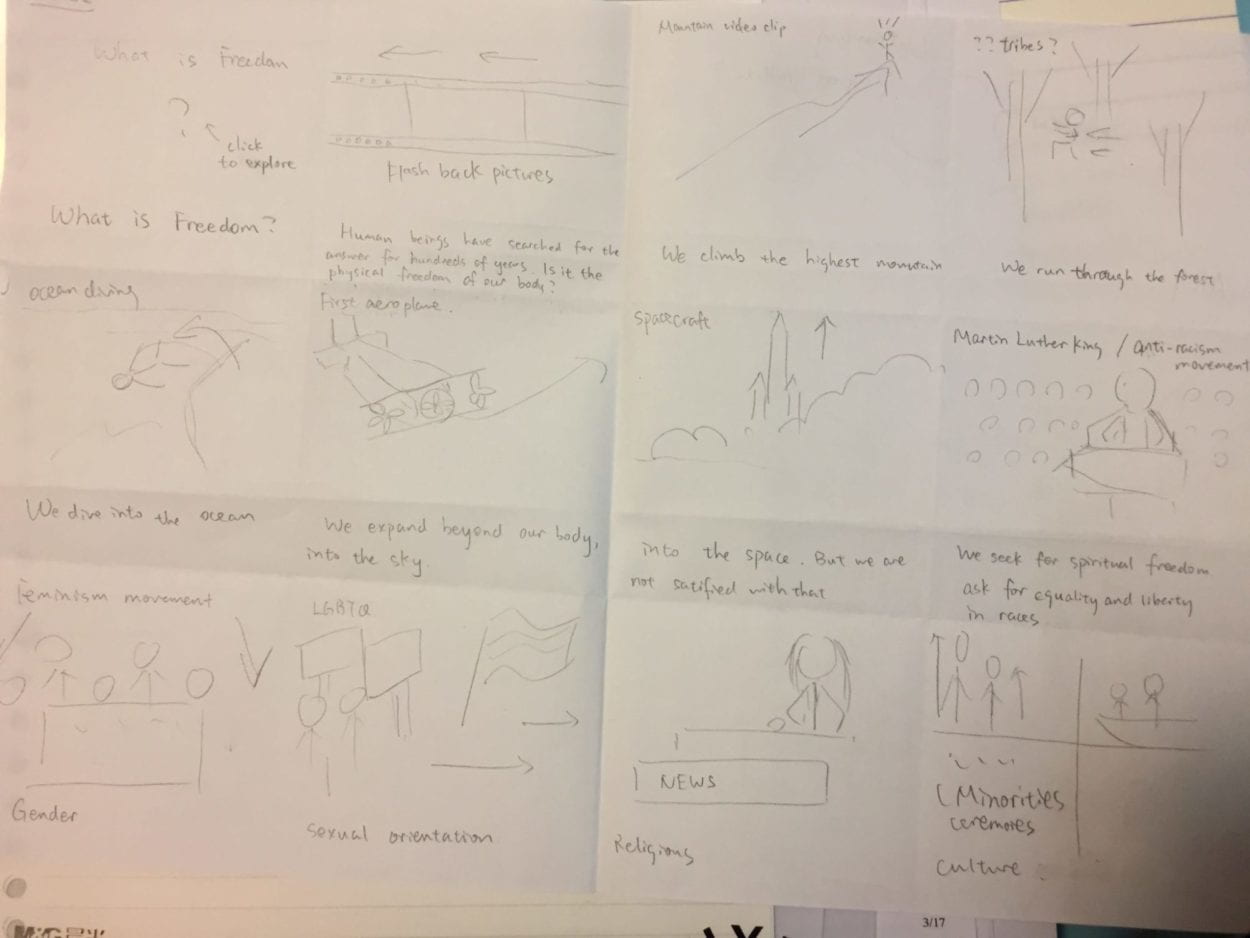Link: https://imanas.shanghai.nyu.edu/~cc5581/week09/video-project/welcome.html
Partners: Chloe Hannah
Main idea:
Our video project focus on the topic of freedom. We want to create a documentary project which includes the history of freedom based our research and a number of interviews with our peers. The start page will first show the beginning montage that illustrates the common concept of freedom and the development of the idea over history. After the short montage ended, the interview clips will show on the screen in random positions. When the user clicks on the video, the window will pop up and the counter will add on one. The video window can be closed at any time and once the number of clips reached 7, the page will jump to the ending video. In this way, we want each user can take away different things from the project and also avoid a long time watching and getting bored.
Process:
We brainstormed on the idea and Chloe come up with the idea of freedom, we all think a documentary video is very unique and the freedom topic is interesting to discuss and think over. I’m responsible for the editing of opening montage and half of the interviews. Hannah is responsible for the ending video and the other half of the interviews and Chloe did the coding part and we three shoot the interview together.
When I was researching the montage sources, I basically searched from two aspects of physical freedom and spiritual freedom in human society and download the suitable video from YouTube. I choose a few seconds from each source and fit them with the background music, which takes me a lot of time.

To explore different angles and shooting environments, we tried a lot of different spots on the campus. During the interview recording, at first, we encountered some technical problems. The Tascam didn’t work at first so we lost few audio sources and the first few interview record did not focus on the interviewees and the light is too dark. We learned to test all the equipment first and fixed these issues in the following recording.
When Hannah and I edited the interview clips, we discussed a lot to make sure all the layout and format are consistent with each other, for example, the subtitle content, font, and the transition. We think this is necessary for the documentary interview videos and will increase positive user experience. Since we use two cameras to record and change angles during the process, I switch between different angles and some focus shot on the interviewees’ subtle movements.


We shot 14 interviews in all and we want the user to choose the video clips by themselves. So Chloe designs the webpage and wrote the random position code. We also want to avoid an overly long project so we set a limitation on the number of videos that the users can watch.

Reflection:
During the user test, we received a lot of useful feedback. Some people suggested us to change the button on the web page to make it more clear (delete the next button before the user choose the last interview and change the size). They also suggested some revision on the montage video, for example, it would be better to put our names in the ending video rather than the beginning video. We improved our project according to these suggestions and also improved the layouts.
In brief, since our project is a documentary video which is quite different with other videos that have a storyline and certain characters, it is important for us to integrate everything and make them unified and organized. I think we can improve the animation effects of the web page elements for further improvement. Also, we may want to expand our interviewees to people outside the campus. But overall I’m satisfied with our project and I think it’s really thoughtful and meaningful.


